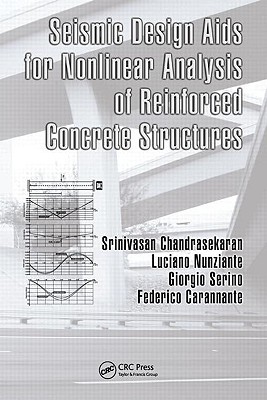
- We will send in 10–14 business days.
- Author: Srinivasan Chandrasekaran
- Publisher: CRC Press
- ISBN-10: 1439809143
- ISBN-13: 9781439809143
- Format: 15.5 x 23.9 x 2.3 cm, hardcover
- Language: English
- SAVE -10% with code: EXTRA
Seismic Design AIDS for Nonlinear Analysis of Reinforced Concrete Structures (e-book) (used book) | bookbook.eu
Reviews
Description
Nonlinear analysis methods such as static pushover or limit analysis until collapse are globally considered reliable tools for seismic and structural assessment. But the accuracy of seismic capacity estimates--which can prevent catastrophic loss of life and astronomical damage repair costs--depends on the use of the correct basic input parameters.
Tools to Safeguard New Buildings and Assess Existing Ones
Seismic Design Aids for Nonlinear Analysis of Reinforced Concrete Structures simplifies the estimation of base structural parameters and enables accurate evaluation of proper bounds for the safety factor. Many design engineers make the relatively common mistake of using default properties of materials as input to nonlinear analyses without realizing that any minor variation in the nonlinear characteristics of constitutive materials, such as concrete and steel, could result in a solution error that leads to a disastrously incorrect assessment or interpretation. To achieve a more accurate pushover analysis and improve general performance-based design, this book:
- Reviews relevant literature to help engineers conduct structural seismic assessment
- Includes design curves, alleviating the need for complex mathematics
- Offers supplementary online tools to aid in computing any parameter
- Provides complete computer coding used to obtain building collapse multipliers
Reassessing key inputs, this book analyzes boundaries using a detailed mathematical model based on international codes. It proposes design curves and tables derived from the authors' studies, detailing modeling numerical procedures step by step. The authors include analytical bounds of the structural safety factor for some typical frames, making this work a sound and valuable tool for assessment or desi
EXTRA 10 % discount with code: EXTRA
The promotion ends in 19d.00:33:24
The discount code is valid when purchasing from 10 €. Discounts do not stack.
- Author: Srinivasan Chandrasekaran
- Publisher: CRC Press
- ISBN-10: 1439809143
- ISBN-13: 9781439809143
- Format: 15.5 x 23.9 x 2.3 cm, hardcover
- Language: English English
Nonlinear analysis methods such as static pushover or limit analysis until collapse are globally considered reliable tools for seismic and structural assessment. But the accuracy of seismic capacity estimates--which can prevent catastrophic loss of life and astronomical damage repair costs--depends on the use of the correct basic input parameters.
Tools to Safeguard New Buildings and Assess Existing Ones
Seismic Design Aids for Nonlinear Analysis of Reinforced Concrete Structures simplifies the estimation of base structural parameters and enables accurate evaluation of proper bounds for the safety factor. Many design engineers make the relatively common mistake of using default properties of materials as input to nonlinear analyses without realizing that any minor variation in the nonlinear characteristics of constitutive materials, such as concrete and steel, could result in a solution error that leads to a disastrously incorrect assessment or interpretation. To achieve a more accurate pushover analysis and improve general performance-based design, this book:
- Reviews relevant literature to help engineers conduct structural seismic assessment
- Includes design curves, alleviating the need for complex mathematics
- Offers supplementary online tools to aid in computing any parameter
- Provides complete computer coding used to obtain building collapse multipliers
Reassessing key inputs, this book analyzes boundaries using a detailed mathematical model based on international codes. It proposes design curves and tables derived from the authors' studies, detailing modeling numerical procedures step by step. The authors include analytical bounds of the structural safety factor for some typical frames, making this work a sound and valuable tool for assessment or desi


Reviews